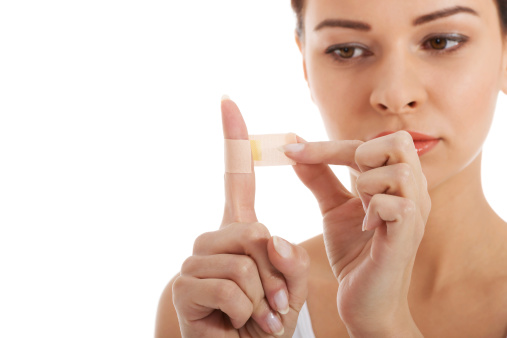 Burns are among the most serious wounds you can get. The wounds can lead to bacterial infections from strains like Escherichia coli (E. coli), Staphylococcus aureus, Enterococcus faecalis, and Pseudomonas aeruginosa. Bacterial infections can increase the risk of a life-threatening infection called sepsis. It will enter the bloodstream and progress quickly to cause organ failure and shock. Infections are common in children, especially since they have immature immune systems.
Burns are among the most serious wounds you can get. The wounds can lead to bacterial infections from strains like Escherichia coli (E. coli), Staphylococcus aureus, Enterococcus faecalis, and Pseudomonas aeruginosa. Bacterial infections can increase the risk of a life-threatening infection called sepsis. It will enter the bloodstream and progress quickly to cause organ failure and shock. Infections are common in children, especially since they have immature immune systems.
Antibiotics are often used to prevent bacterial infections. Antibiotics used include aminoglycoside, cephalosporin, macrolide, penicillin, and quinolone. The downside is that antibiotic resistance is a real concern where the body becomes susceptible to the drugs.
In a new study published in the journal ACS Applied Materials, researchers have developed a prototype bandage that changes color after a wound becomes infected. Study researchers were from U.K. institutions, including the University of Brighton, the University of Bath, and the Healing Foundation Children’s Burns Research Centre. The Medical Research Council funded the project.
The bandage, or wound dressing, is placed on an uninfected area. The researchers found that the pattern and color of the bandage will change four hours after the development of an infection. The new innovative bandage is thought to be a game-changer that may save lives against antibiotic resistance.
“Our medical dressing works by releasing fluorescent dye from nanocapsules triggered by the toxins secreted by disease-causing bacteria within the wound,” explained study author and project leader Dr. Toby Jenkins. “The nanocapsules mimic skin cells in that they only break open when toxic bacteria are present; they aren’t affected by the harmless bacteria that normally live on healthy skin.”
Previous research has found that bacteria infecting a wound will form in biofilms, which are compromised of related bacteria coated in polymer. A person’s natural immune system or antibiotics offer some protection against bacteria.
The groundbreaking, color-changing bandage solution can effectively detect biofilms. The bandage is made from a hydrated agarose film that contains tiny capsules of colored fluorescent dye. The capsules are designed to recognize E. coli, Enterococcus faecalis, Staphylococcus aureus, and Pseudomonas aeruginosa.
The research team discovered that the color change response is stronger with bacteria strains that commonly produce good biofilms. The color-changing bandage may indicate not only the infection, but also the specific bacteria type.
The Band-Aid technology has significant potential to also help detect other chronic and acute wounds. The bandage is still in its early phases of development, and future clinical trials will test the wound dressing on real patients.
Besides bacterial infections, other complications from burns include dehydration, low blood volume, extreme low body temperatures, breathing difficulties, scarring, and bone and joint problems.
To help prevent antibiotic resistance and burn complications, certain supplements can help treat burn infections such as calendula, aloe vera, L-glutamine, zinc, mixed carotenoids, colloidal silver, propolis, manuka honey, and an antioxidant complex with vitamin E, vitamin C, and selenium. Homeopathic remedies can also help treat burns, including cantharis, apis, arsenicum, causticum, rhus toxicodendron, hypericum, and urtica urens.
Sources for Today’s Article:
Thet, N.T., et al., “Prototype Development of the Intelligent Hydrogel Wound Dressing and Its Efficacy in the Detection of Model Pathogenic Wound Biofilms,” ACS Applied Materials & Interfaces, published online October 22, 2015; doi: 10.1021/acsami.5b07372.
“Color changing Band-Aid gives early warning of infection,” Medical News Today web site, November 16, 2015; http://www.medicalnewstoday.com/articles/302582.php.
“Burns,” University of Maryland Medical Center web site; https://umm.edu/health/medical/altmed/condition/burns, last accessed November 16, 2015.
Balch, J., et al., Prescription for Natural Cures: A Self-Care Guide for Treating Health Problems with Natural Remedies Including Diet, Nutrition, Supplements, and Other Holistic Methods (Hoboken: John Wiley & Sons, Inc., 2004), 113-116.
Bjarnsholt, T., “The role of bacterial biofilms in chronic infections,” APMIS Supplement, 2013; (136): 1-51, doi: 10.1111/apm.12099.
“Treatments for bacterial infections,” Net Doctor web site, November 2, 2015; http://www.netdoctor.co.uk/medicines/infections/a25910/treatments-for-bacterial-infections/.
“Complications,” Mayo Clinic web site; http://www.mayoclinic.org/diseases-conditions/burns/basics/complications/con-20035028, last accessed November 16, 2015.
